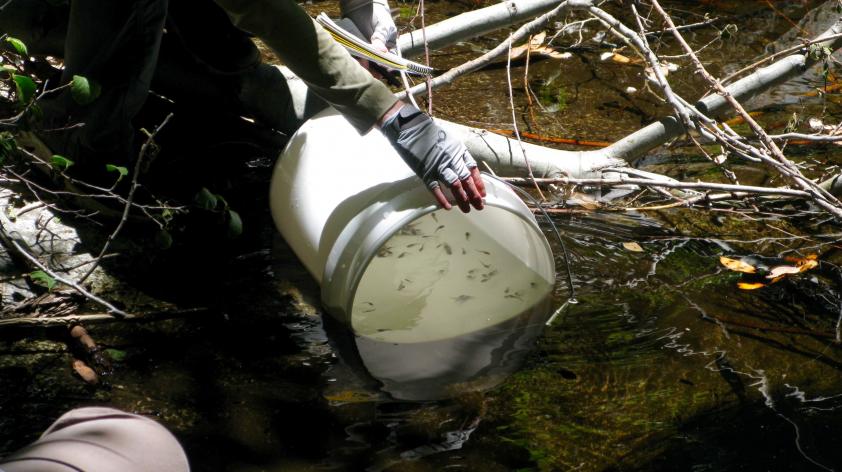
Independence Day for MYLF Tadpoles
For the staff members, the day began at 6 am where we congregated in the lab, began counting the mountain yellow-legged frog (MYLF) tadpoles and transferring them from their tanks to transport buckets. We ended up with 6 buckets which contained between 175 and 200 tadpoles. Each transport bucket was then placed inside of another bucket which contained a small amount of ice. This set up allows us to maintain a cool consistent temperature for the 2½ hour drive from Escondido to the San Jacinto Mountains.
When we arrived at the release site we met up with Allison Alberts, Chief Conservation and Research Office, Ron Swaisgood, Director of Applied Animal Ecology, and USGS. After a quick rundown of the plan we unloaded the buckets, emptied the ice, and started the trek down to the six release pools that were scouted out by USGS prior to the release date.
The tadpole release itself is not overly complicated. At each pond we record air temperature, wind speed, humidity, water temperature, and pH and then gradually acclimatize the tadpoles to the ponds water chemistry. When it is time to release the tadpoles, we slowly tip the bucket and gently pour them into the pond.
After the initial reintroduction, we return to the release pool every two weeks to check on water levels and to see how the tadpoles are faring. It should be noted that spotting a tadpole can be difficult! If the pond is not in direct sunlight or it contains a lot of ledges and dark hiding places it can be almost impossible. If the water is murky, the odds get even worse. Luckily we have had some good fortune and we have been able to spot quite a few tadpoles, all of which appeared healthy and well fed.
Some more exciting news!
150 more tadpoles were released on September 9, 2016 in East Fork City Creek in the San Bernardino Mountains. This was an exceptionally monumental reintroduction, because it is the first time we have had a reintroduction for this particular population in the 10 years the mountain yellow-legged frog program has been in operation at the San Diego Zoo Institute for Conservation Research. 200 tadpoles from this same population are being held back in our laboratory and head-started until they morph into froglets, which will be released in spring of 2017!













